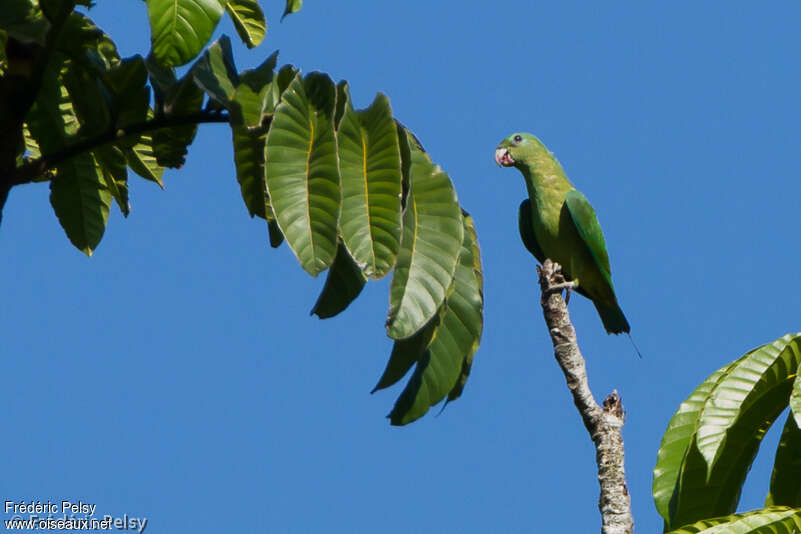
The Sulu Racquet-tail (Prioniturus verticalis) is a rare and little-known species of parrot endemic to the Sulu Archipelago in the southwestern Philippines. Here’s an overview of this bird:
🐦 Sulu Racquet-tail Overview
- Scientific Name: Prioniturus verticalis
- Common Names: Sulu Racquet-tail, Sulu Racket-tail
- Family: Psittaculidae (Old World parrots)
- Conservation Status: Critically Endangered (IUCN Red List)
🔍 Identification
- Size: Small parrot, approximately 25 cm (10 in) in length, including the distinctive tail.
- Plumage:
- Predominantly green with a lighter greenish-yellow underside.
- Blue patch on the crown.
- Male has elongated central tail feathers ending in racquet-shaped tips, a unique feature among racquet-tail parrots.
- Bill: Pale, slightly hooked.
- Eyes: Dark.
🌴 Habitat & Distribution
- Found only in the Sulu Archipelago, particularly on Tawitawi Island.
- Inhabits lowland tropical forests, often in primary and mature secondary growth.
- Range is extremely restricted due to extensive deforestation and habitat loss.
⚠️ Conservation Concerns
- Population: Estimated at fewer than 250 mature individuals.
- Threats:
- Habitat destruction due to logging and agricultural conversion.
- Hunting and trapping for the illegal pet trade.
- Political instability in the region makes conservation efforts challenging.
- Conservation Actions Needed:
- Protection of remaining forest habitat.
- Enforcement against illegal trade.
- Community-based conservation programs.
📚 Interesting Fact
The racquet-shaped tail feathers are not present in females, making this a sexually dimorphic feature—helpful in distinguishing males from females in the field.




Here are some authentic photos of the Sulu Racquet-tail (Prioniturus verticalis), also known as the Blue‑winged Racquet‑tail:
📸 About the Photos
These images capture the parrot’s distinctive features, such as its green plumage, bright blue crown, and the unique “racquet”-tipped central tail feathers. The male often displays a red spot on its forehead, while females lack this marking, making sexual identification possible en.wikipedia.org+14en.wikipedia.org+14angryphilippinebirds.tumblr.com+14.
🔍 Identification Features Visible in Images
- Green plumage with lighter underparts and hints of blue on the head and wing feathers ebird.org+6en.wikipedia.org+6en.wikipedia.org+6.
- Racquet-tipped tail feathers—a hallmark of the Prioniturus genus datazone.birdlife.org.
- Red and blue crown patch on males; females exhibit only the blue crown x.com+15en.wikipedia.org+15ebird.org+15.
🗺️ Context & Conservation
These photos were mostly taken in lowland and mangrove forests of Tawitawi Island, the only place where these birds reliably occur today parrots.org+12ebird.org+12planetofbirds.com+12. With fewer than 250 mature individuals left, this species is Critically Endangered due to habitat loss and trapping en.wikipedia.org+4datazone.birdlife.org+4en.wikipedia.org+4.